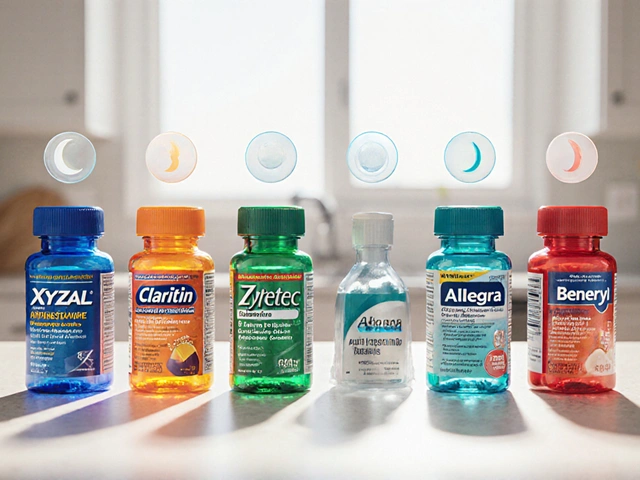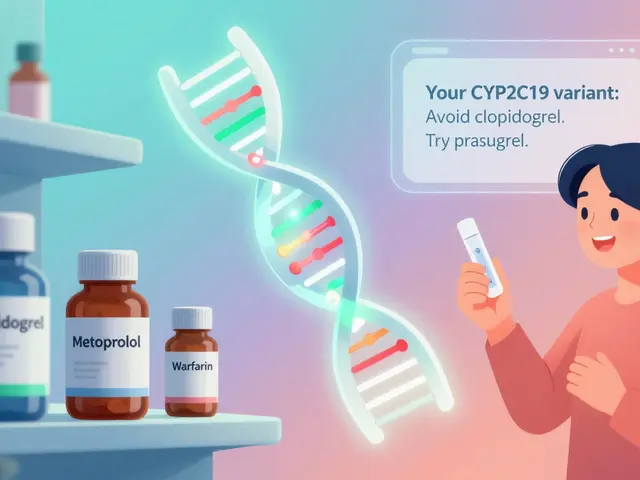Xyzal vs. Other Antihistamines: Which Allergy Reliever Is Best?
October 6 2025Hyperpigmentation: Practical Guide to Causes and Treatments
Dark spots and uneven skin tone show up for clear reasons: sun, inflammation, hormones, and sometimes injury. Hyperpigmentation means extra pigment in patches. It can be slow to fade, but you don’t always need aggressive procedures to see improvement.
Start with sun protection. Daily sunscreen (SPF 30 or higher, broad spectrum) is the single most effective step. Use a physical blocker (zinc oxide or titanium dioxide) if you spend time outdoors. Reapply every two hours, and wear a hat or seek shade when the sun is strongest.
Topical options that really work
Some ingredients reduce pigment production and speed cell turnover. Look for:
- Hydroquinone: a strong pigment blocker often used short-term under medical advice. It can work fast but needs careful monitoring.
- Retinoids (retinol, tretinoin): speed skin renewal and help other actives penetrate better.
- Azelaic acid: reduces pigment and calms inflammation; good for sensitive or acne-prone skin.
- Vitamin C: brightens and protects against free radicals.
- Niacinamide: evens tone and strengthens the skin barrier.
- Alpha hydroxy acids (glycolic, lactic): exfoliate surface pigment and improve texture.
Combine wisely. For example, vitamin C in the morning and a retinoid at night is a simple, effective routine. Don’t layer too many strong actives at once — that risks irritation and can cause more pigment.
Procedures and when to see a pro
Chemical peels, microdermabrasion, and lasers can help faster but carry risk, especially for darker skin tones. Post-inflammatory hyperpigmentation (PIH) can follow aggressive treatments. If spots get worse after treatment, stop and see a dermatologist. Also check with a clinician if a dark patch changes shape, bleeds, or looks uneven — those are reasons to rule out skin cancer.
Skin type matters. People with darker skin often respond differently to lasers and peels and need gentler plans. Tell your provider about past reactions, medications, and any hormone treatments, since birth control or pregnancy can trigger melasma.
Buying topical meds online? Use trusted pharmacies and check for licensure. If you order prescription creams, make sure the site requires a valid prescription and lists contact info. Pharmacy2Home covers safe buying tips and how to verify online pharmacies.
Practical routine: cleanse gently, apply antioxidant serum in the morning, use sunscreen, and at night apply a targeted treatment (azelaic acid or a prescribed hydroquinone/retinoid plan). Be patient — most spots need 8–12 weeks to show improvement.
If you want help picking ingredients or understanding product labels, talk to a pharmacist or dermatologist. Small changes done consistently usually give the best, longest-lasting results.
 23 Oct
23 Oct
Azelaic Acid & Vitamin C: The Ultimate Skincare Pairing
Discover how azelaic acid and vitamin C work together to clear acne, fade dark spots, and boost radiance. Get step‑by‑step routines, safety tips, and a quick comparison with other actives.
Read More... 28 Apr
28 Apr
Microneedling for Mottled Skin Discoloration: Real Results and Surprising Perks
Curious about why microneedling is popping up as a go-to solution for mottled skin discoloration? This article breaks down what actually happens to your skin when you try microneedling, explains why it helps patchy uneven skin, and shares real tips for getting the best results. We’ll dig into what makes this treatment stand out, what to expect during recovery, and key things to ask a provider before booking. Handy do’s, don’ts, and practical facts included.
Read More...




